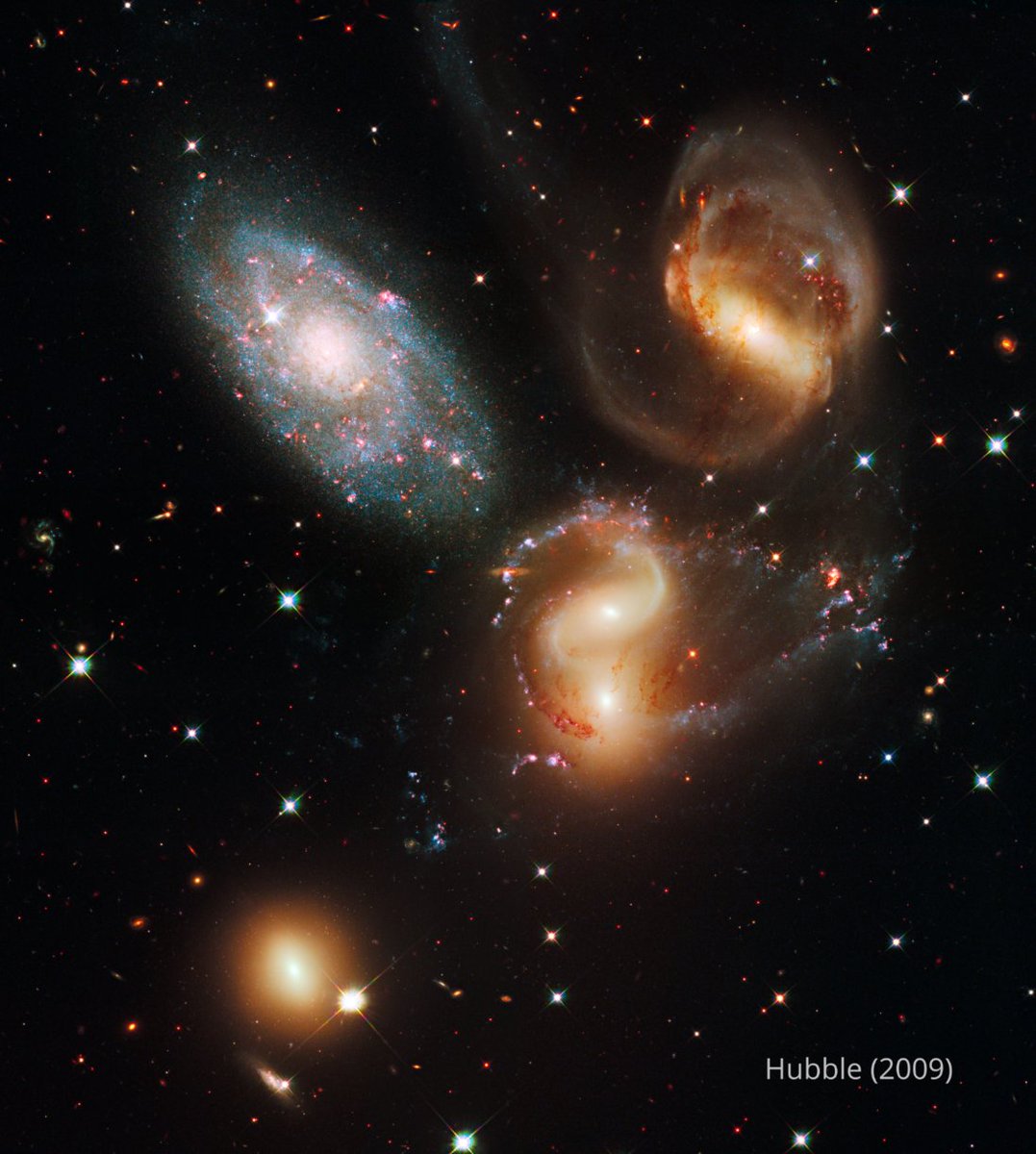
✋🏼 Galactic high five!
In Webb’s image of Stephan’s Quintet, we see 5 galaxies, 4 of which interact. (The left galaxy is in the foreground!) Webb will revolutionize our knowledge of star formation & gas interactions in these galaxies: nasa.gov/webbfirstimage… #UnfoldTheUniverse
In Webb’s image of Stephan’s Quintet, we see 5 galaxies, 4 of which interact. (The left galaxy is in the foreground!) Webb will revolutionize our knowledge of star formation & gas interactions in these galaxies: nasa.gov/webbfirstimage… #UnfoldTheUniverse

Galaxies collide in Stephan’s Quintet, pulling and stretching each other in a gravitational dance. In the mid-infrared view here, see how Webb pierces through dust, giving new insight into how interactions like these may have driven galaxy evolution in the early universe. 

Webb's mosaic is its largest image to date, covering an area of the sky 1/5 of the Moon’s diameter (as seen from Earth). It contains more than 150 million pixels and is constructed from about 1,000 image files. Compare the new image to @NASAHubble’s 2009 view, shown here! 

• • •
Missing some Tweet in this thread? You can try to
force a refresh











